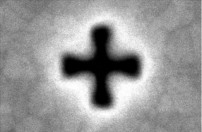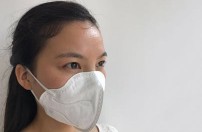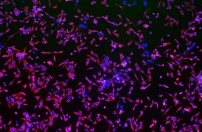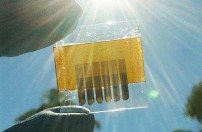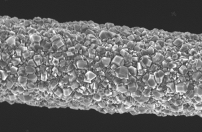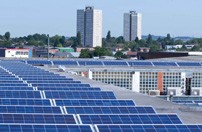ANFF Victoria
Current
Colour coded chemicals
The device uses the interaction between photons and electrons to filter out colours to create an ‘optical barcode’ that is specific to a sample and can be compared to a library of known material signatures.
Read more...Automatically assembling nanolenses
A team of researchers has created a scalable production method for a class of nanoscale lenses using the electrostatic forces between charged nanoparticles, enabling wider application of the technology.
Read more...Nanofibre facemasks provide a breath of fresh air
Deakin University’s Institute of Frontier Materials (IFM) has been ANFF VIC equipment to develop a new type of nanofibre facemask.
Read more...Ultrathin holograms open doors to 3D displays
A team from RMIT University and Beijing Institute of Technology have fabricated the world’s thinnest hologram – and it could revolutionise the way we interact with everyday technologies.
Read more...Providing a platform for muscle stem cell therapy
A team of Victoria-based researchers is taking tips from Mother Nature to make muscle stem cell (MSC) therapy a more effective and affordable option for treating degenerative diseases.
Read more...Creating back-contacted solar cells
By combining the benefits of back-contacted solar cells with perovskite materials, researchers have achieved a much sought after pathway to more efficient photovoltaic devices.
Read more...Diamond coating Carbon Fibre
A team of Victorian scientists have coated carbon fibre with diamond, enhancing the material’s usability in medical and sensor applications where the composite material offers huge potential advantages.
Read more...Exploring gold nanowires and nanorods
Professor Wenlong Cheng from Monash University has been exploring unique properties of gold nanomaterials for over 16 years. Two recent projects, conducted at ANFF-Vic’s Melbourne Centre for Nanofabrication (MCN), involved gold nanorods and gold nanowires.
Read more...High performance microfluidics increase solar panel efficiency
There is now a global drive towards making solar energy more affordable. However current technologies have defects – for every 10°C increase in operating temperature, most solar cells become around 5% less efficient. This project aims to tackle these problems.
Read more...Small fibres solving big problems
This project aims to solve the problems associated with producing nano fibres on a large scale so that they might be used in products such as face masks and respirators for highly polluted environments.
Read more...Archive
Safeguarding water against oil spills and polution
Oil spillage, organic solvents and other industry contaminants are primary pollutants of water sources around the globe. The existing conventional methods used to solve spillages are not very efficient and have their own environmental consequences. New nanomaterials and nanotechnology are aiding the development of new high-efficient absorption materials.
Read more...
